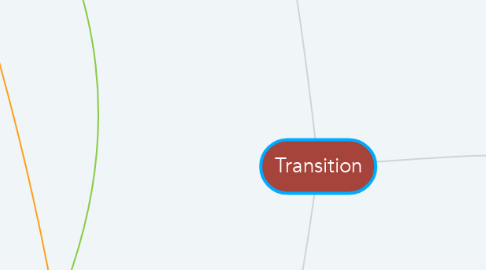
1. Roles
1.1. Student
1.1.1. Inform team of interests, strengths, and needs
1.1.2. self-advocate in decisions being made and have communication in discussions of needs and strengths
1.2. Special Education Teacher
1.2.1. academic support for the student
1.2.2. monitors progression of student
1.3. General Education Teacher
1.3.1. discuss student's current capabilities
1.3.2. links to specific programs
1.4. LEA Representative
1.4.1. support school staff
1.4.2. is usually an adiministrator
1.4.3. provides information about laws, school
1.5. Parent/Guardian
1.5.1. advocate for student
1.5.2. contribute crucial information about student, otherwise unknown
1.6. School-to-Work Transition Agencies
1.6.1. identify and discuss student's vision for the future beyond high school
2. Transition Planning
2.1. Section of the Individualized Education Plan (IEP) that outlines goals and future services for the student.
2.1.1. results-oriented process
2.2. Legalities of writing the IEP
2.2.1. responsibilities of the transition services in the IEP are on the school district
2.2.2. student is not required before the age of majority, but one year before, the student is to be informed of the rights of transition
2.2.3. courses need to be completed for graduation
2.2.4. Notification all parties involved to be a part of the IEP
2.2.5. the team is required to make sure the student's needs and interests are included
2.3. Individuals with Disabilities Education Act (IDEA) and requirements.
2.3.1. Transition discussion required during IEP when the student turns 16 years old, but should start before.
2.3.2. Focuses on specific planning and goal setting for necessary services.
2.3.3. be individualized
2.3.4. include opportunities to build skills for after high school
2.3.5. confidentiality to the team and student
2.3.6. clear responsibilities of agencies
2.4. Based upon: individual needs, strengths, skills, and interests.
2.5. Components include:
2.5.1. Program Structure
2.5.1.1. Foundational elements for school staff to effectively implement transition services
2.5.1.1.1. philosophy, planning, policy, evaluation
2.5.2. Student-focused Planning
2.5.2.1. Identifying a student’s goals and interests and placing supports to help the student achieve them.
2.5.2.1.1. formal and informal assessments
2.5.3. Student Development
2.5.3.1. Using mnemonics, response prompting, community-based instruction, self-management instruction, and computer-assisted instruction.
2.5.3.1.1. Increase the likelihood of student success by providing these supports.
2.5.4. Family Engagement
2.5.4.1. Family's helping their child plan for the future and supporting them during the transition process.
2.5.5. Interagency Collaboration
2.5.5.1. Collaboration to determine what community businesses, organizations, and agencies might be crucial in supporting transition
2.5.5.1.1. Colleges, Mental health agencies, Voc. Rehab centers, Employers, independent living centers, and disability specific agencies are all included in this collaboration.

